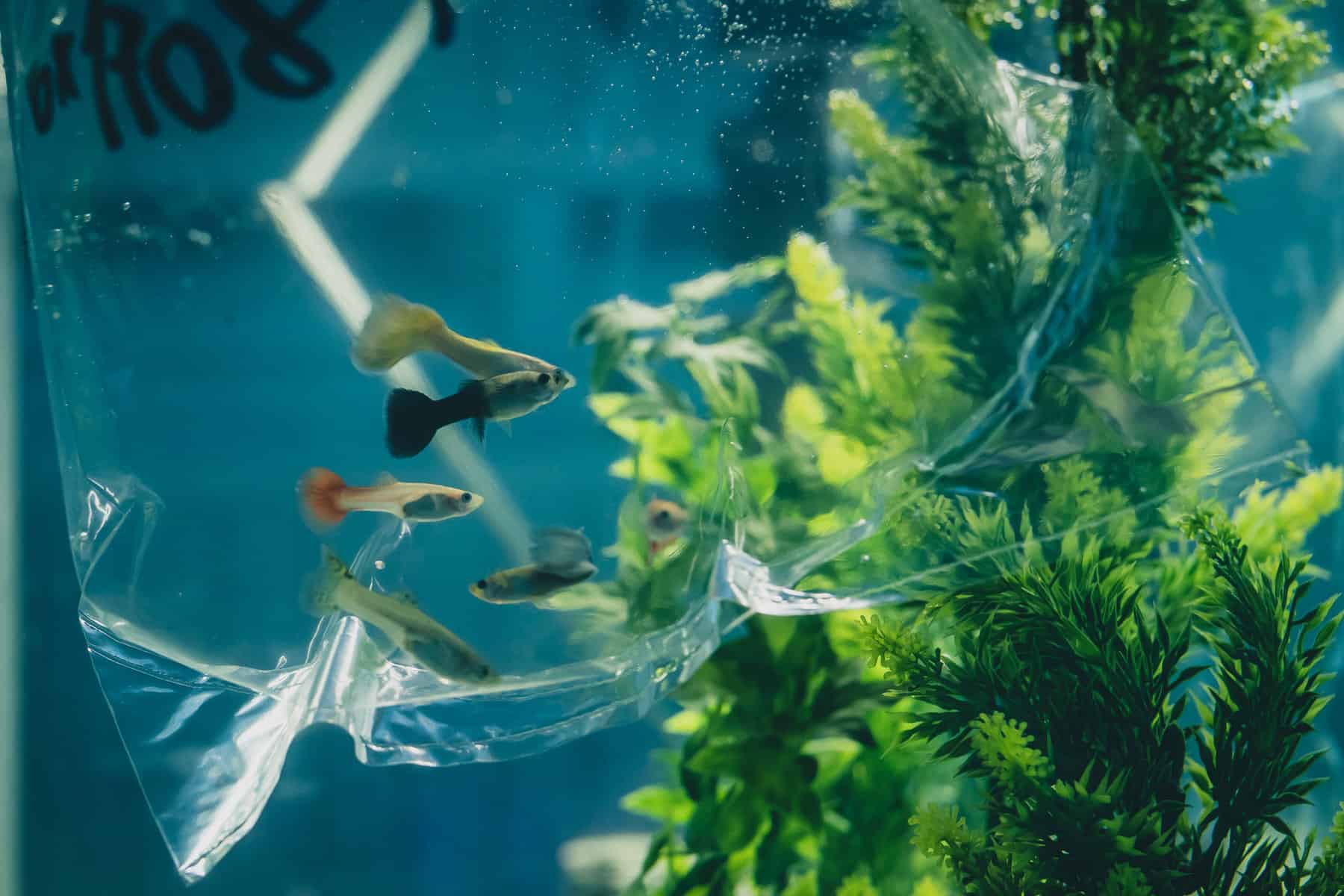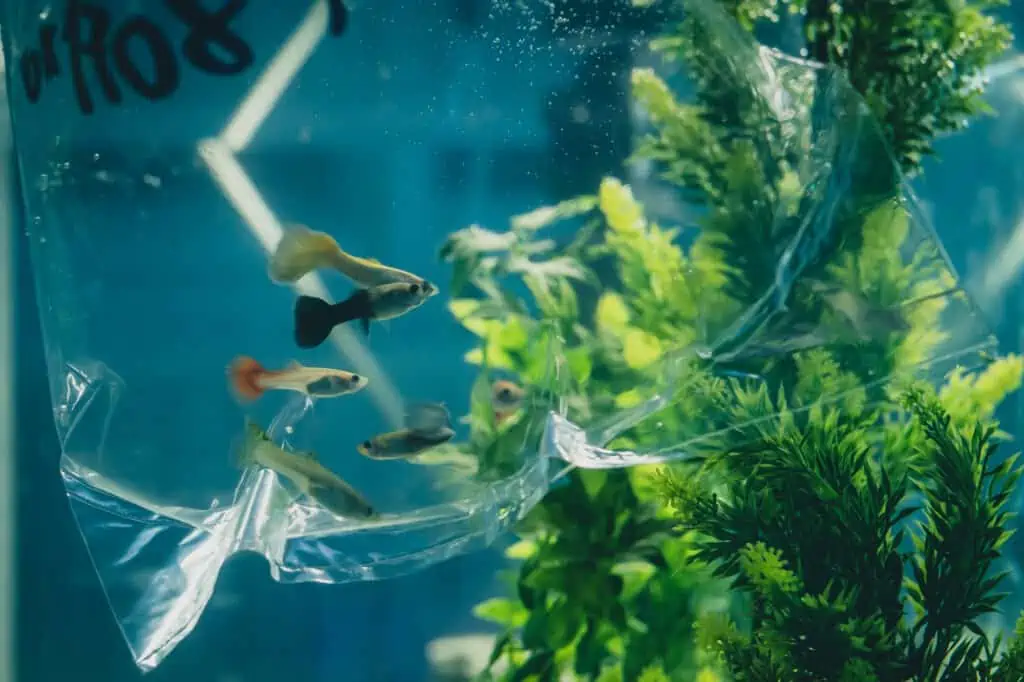Moving your fish from one tank to another can cause your fish stress. You need to make sure that the correct water parameters like PH, temperature, ammonia levels, and more are met.
Read on to learn how to transfer your fish from one tank to another safely in this step-by-step guide.
Clean Any New Equipment
If you plan on using new equipment in the tank that you are transferring your fish to, rinse it first. If there are any chemicals or other packaging debris on the equipment, this will prevent it from getting into your tank water.
If possible, it’s better to use equipment from your old aquarium including decor, filters, and substrate because they have already populated with beneficial bacteria. This can ease the transition between aquariums.
Remove Fish From the Old Tank
Drain the water from your old tank with a siphon into a clean contaminant-free container like a bucket.
Then use a fish net to add your fish to the bucket. Achieve this by putting your hand over the net to prevent the fish from jumping out. Once the fish are in the net, add them to the bucket immediately.
Set Up the New Tank
To avoid fish shock, you’ll need to set up your aquarium properly.
Add Water
You can add water to your tank by either using some of the water from your old aquarium or none of it.
If you use your old aquarium water, only use about one-third of it. After that, add clean tap water to the aquarium. Try to avoid letting any dirt get inside the new tank. Using some of your old tank water can help to establish ammonia and nitrate levels.
Adjust Water Parameters
Make sure that the water temperature in the new tank matches the parameters of the old aquarium. You can use an aquarium thermometer to check the temperature. Adjust the PH level and check the levels with PH tests.
Set any heater you have on the same setting and let it adjust for a few hours and keep testing until it reaches the correct temperature.
Water temperature changes slowly so make sure to check multiple areas of the aquarium to make sure the temperature level is truly appropriate.
Use Your Old Filter
Your new aquarium needs to begin the nitrogen cycle to create a healthy environment for your fish. This helps to remove ammonia and build up beneficial bacteria. Cycling a new aquarium with a new filter can take weeks.
If possible, use your old filter along with a new one for the first few weeks because the old filter is already full of beneficial bacteria. The old filter can be removed after a few weeks and the water should be stable.
Don’t Rinse Equipment From the Old Tank
If you’re using anything from your old tank in your new tank, don’t rinse anything. Beneficial bacteria also live on surfaces in the aquarium like decorations, gravel, and more. Avoiding rinsing those items can help to establish your new aquarium quickly.
Adding your fish to a tank that isn’t cycled can result in fish death.
Place Your Fish in the New Tank
Once you have everything ready in your new aquarium you can finally add your fish. You can use the net to move them from the bucket to the tank and use the same method of placing your hand over the net, so they don’t jump out. Simply submerge the net and let your fish make their way out of the net.
Things To Do After You Switch Tanks

Regularly check the water even after adding your fish to the new tank to make sure the water stays in a stable condition.
Reduce Ammonia Buildup
If you notice excessive ammonia building up in your tank it’s usually due to fish waste. This can be controlled in the first few weeks your fish are in the new tank by controlling how much you are feeding them.
Feeding your fish less than you normally do will help reduce waste and therefore ammonia buildup.
Perform Daily Checks
Check your water temperature and PH daily. Using a thermometer will help you to know if your heater is working properly. You’ll also need to check the PH daily. If the PH isn’t staying stable after a few days, you may have to remove your fish until the PH can be maintained.
If the PH is too acidic, baking soda can increase it. If you need to lower the PH, peat moss works great for this.
Do Your Research
When deciding to switch to a new tank it is best to do your research. It’s important that the new tank is the proper size for your fish. If you plan on trying to move to a smaller aquarium to save space, you’ll have to check the minimum tank size that your fish need to thrive. Some fish need a larger tank volume than others in order to be comfortable.
FAQs
How Do You Transfer Fish Safely?
Small fish may be moved in plastic bags secured with a twist tie or in small plastic containers with a lid. For larger fish, you will have to use the bucket method. At least a 5-gallon bucket is recommended.
What Is the Best Way to Transfer Fish From One Tank to Another?
There are several ways to transfer fish from one tank to another. Most commonly, you can add them to a bag with the old tank water and place the bag in the new aquarium water for at least 20 minutes. You can also use the method suggested above.
Can You Move Fish From One Tank to Another?
As long as the new tank is cycled and all the other water parameters are met including PH, temperature, ammonia, and nitrate levels, it is safe to move fish from one tank to another.
You’ll also need to make sure the new tank is a proper size for all your fish.
How Long Should You Wait to Transfer Fish Into a New Tank?
There is no set amount of time to wait to transfer the fish to the new tank. As long as all water parameters are correct, the fish can be moved.
Conclusion
Moving your fish to a new tank can be a stressful process for both you and your fish. Fish are very sensitive to change. The most important thing to remember is to make sure your tank conditions are right where they need to be before adding your fish to the tank.
Take each step carefully and you’ll have happy and healthy fish in a brand-new environment.


